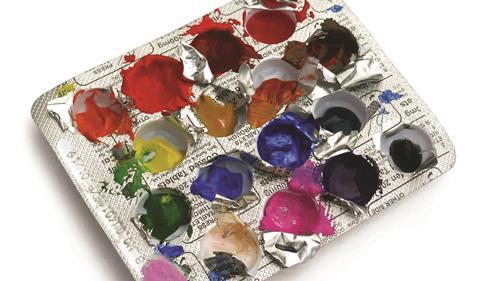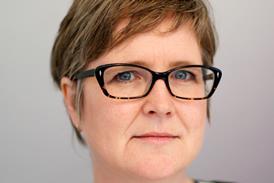As chronic health conditions and their associated costs rise, using arts based therapy programmes for treatment is an innovative option, says Jessica Harris

Case studies from clinical commissioning groups and providers show significant potential for arts and cultural interventions to prevent or limit ill health.
This is particularly so for some chronic health conditions, where preventative measures can save money and bring wider social benefits over time. Examples include mental health conditions, dementia and obesity.
‘Arts and cultural activities can deliver better outcomes than some medically focused therapies’
These case studies show evidence of positive outcomes for patients from arts and cultural interventions and, in some cases, advantages for carers and staff as well.
Although relatively small scale, several of the studies are backed by evidence gathered using standardised tools to measure their impact.
Sue Gallagher, lay member, engagement and quality lead of Lambeth CCG, says she has “seen arts and cultural activities deliver better outcomes than some medically focused therapies”.
Activate the patient
The King’s Fund 2014 report, Supporting People to Manage their Health, reviewed the evidence behind the behavioural concept known as “patient activation”, which describes the knowledge, skills and confidence a person has in managing their own health and care.
The patient activation measure (PAM) is a patient reported measure that has been validated in the UK.
‘Many of the interventions specifically focus on building skills and confidence’
The King’s Fund report supports the case that people with high levels of activation are most likely to adopt positive health behaviours, have better clinical outcomes, be more satisfied with care and have reduced healthcare costs.
It finds that effective interventions are often those tailored to an individual’s level of activation, and that those less activated should be encouraged to take small steps where they are likely to experience success because it is highly motivating.
Many of the interventions by arts and cultural organisations specifically focus on building skills and confidence, through programmes that are adapted to individual needs.
Scale models
Provider organisations of arts and cultural interventions often use measurements tools such as the Warwick-Edinburgh Mental Well-being Scale (WMWBS) and the Outcomes Star to gather evidence of an individual’s progress. Commissioners are then able to compare outcomes from arts and cultural programmes with those of other interventions.
Heywood, Middleton and Rochdale CCG uses Cartwheel Arts to help build stronger communities, improve mental health within diverse local communities and reduce health inequalities. Cartwheel uses a person centred approach and locates its work in the community rather than in clinical settings. It uses professional artists alongside dedicated emotional support workers with a therapeutic background to help adults with mild to moderate mental health issues.
Cartwheel measures its impact on individuals using a variety of tools, including WMWBS and the Mental Health Recovery Star (one of the Outcomes Stars). Because of the complexities of eliciting valid responses from patients - for example, those with cognitive, speech or language issues - Cartwheel also uses case studies of individuals and photographs of the creative work they produce.
‘Arts and cultural interventions work with people’s potential rather than focusing on the problems’
Cartwheel’s value for money is demonstrated through its provision of a cost per head figure. Some of those involved have continued their creative activities in their own groups.
Gloucestershire CCG supports an arts on prescription service to prevent chronic conditions from becoming acute. Known as Artlift, the scheme involves arts organisations across the county.
A local GP noticed the positive effect that taking part in creative work had on health. The GP decided to set up a programme for patients with long term conditions such as depression or chronic pain, who could be referred for 10 weeks of arts activity.
He then carried out a study of 90 patients who went through the course. When compared to the number of GP consultations and hospital admissions over a three year period, the study found that GP consultations for those in the study group dropped by 37 per cent six months after engagement in arts activity. Hospital admissions fell by 39 per cent over the year following their engagement.
A study by the University of Gloucestershire found that Artlift had better completion and attendance rates than other primary care based health referral programmes such as exercise schemes.
A report by the Cultural Commissioning Programme, Opportunities for Alignment, found that an increasing focus on commissioning for outcomes provides an opportunity to commission effective programmes that are tailored to individual needs through the use of arts and cultural providers.
“Arts and cultural interventions take an asset based approach - working with people’s potential and giving them a chance to succeed - rather than focusing on the problems and challenges that they face,” it said.
It also found: “Arts and cultural activities are particularly valuable when compared to other interventions, as they are more likely than alternative approaches to engage participants and ensure ongoing participation. They are able to reach people without accentuating any stigma.”
The report found particularly strong alignment with outcomes that health and social care commissioners are targeting in mental health, physical health, education and learning, and employment and training.
Looking out
One of the characteristics identified by the NHS Leadership Academy’s healthcare leadership model is the ability to creatively apply fresh approaches to the transformation of services, based on evidence of what has been effective outside their area of work.
At a time when chronic health conditions and associated costs are increasing rapidly, evidence gathered so far on the ability of arts and cultural interventions to work with individuals with complex needs, and to contribute to a population that stays healthier for longer, deserves a second look.
Some commissioners are considering the evidence and taking action.
Jessica Harris is project manager of the Cultural Commissioning Programme



























No comments yet